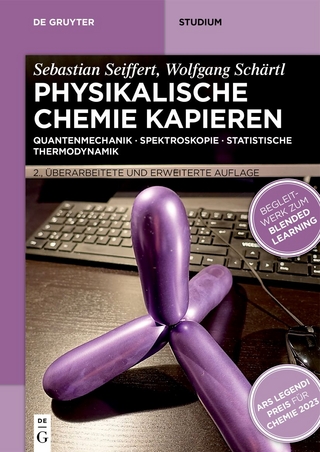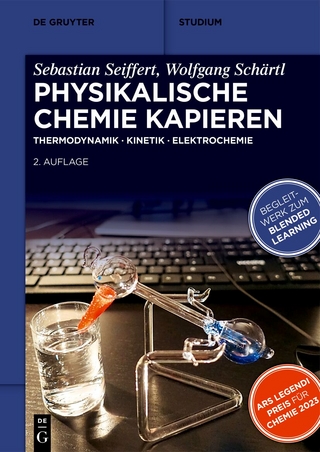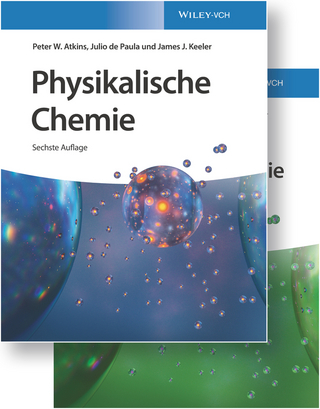
Polish Quantum Chemistry from Kołos to Now
Academic Press Inc (Verlag)
978-0-443-18594-6 (ISBN)
Additional chapters cover Coupled cluster downfolding techniques: a review of existing applications in classical and quantum computing for chemical systems, Exploring the attosecond laser-driven electron dynamics in the hydrogen molecule with different real-time time-dependent configuration interaction approaches, Molecular systems in spatial confinement: variation of linear and nonlinear electrical response of molecules in the bond dissociation processes, and much more.
Monika Musial graduated from the University of Silesia in Katowice (MSc in theoretical chemistry) in 1996. She received her Ph.D degree in 2002 (University of Silesia in Katowice) for the work on the development of new coupled cluster models including high-rank cluster operators. In the following years she spent some time in Quantum Theory Project (University of Florida, Gainesville) working as a postdoctoral associate in the research group of Professor Rodney J. Bartlett. In 2010 she made her habilitation (with distinction, Faculty of Chemistry, University of Warsaw) and later in 2014 she received a full professor position. In the following years she continued collaboration with prof. Bartlett as a visiting researcher/professor in Quantum Theory Project. She also made short term visits to the Institute for Nuclear Theory, University of Washington, Seattle, USA and Laboratoire de Chimie Quantique Universite Louis Pasteur, Strasbourg, France. Currently, she is a Professor of Chemistry in the Institute of Chemistry of the University of Silesia in Katowice. Her research interests are focused on the development of new computational methods within the framework of the coupled cluster theory. The new approaches are aimed at the accurate determination of energies and properties of ground and excited states. These tools are particularly useful in studies of potential energy curves and owing to that they can be used in the accurate description of a dissociation process. Such highly accurate methods are necessary in the studies of molecules in ultralow temperatures where the precise knowledge of interatomic interactions in the whole range of the distance between engaged atoms is required. She supervised several research projects focused on the development of new methods devoted to the theory of electron correlation (e.g., from National Science Centre in Poland). She organized international conferences: 15th Central European Symposium on Theoretical Chemistry held in Poland in September 2017; co-chaired (with Prof. Krzysztof Pachucki from University of Warsaw) Warsaw Molecular Electronic Structure Virtual Conference (September 2020). She is a member of Scientific Committee organizing Molecular Electronic Structure conferences. She was a supervisor for a number of Ph.D. thesis at the University of Silesia and she was a member/reviewer in several research funding committees. Ireneusz Grabowski is a professor of physical sciences, specializes in theoretical physics and quantum chemistry. Full professor (since 2015) and director of the Institute of Physics of the Faculty of Physics, Astronomy Informatics at the Nicolaus Copernicus University (NCU) in Toruń, Poland. He graduated from NCU (MSc in computer physics). In 1999 he received a Ph.D. degree in theoretical physics for the work “Almost-linear coupled cluster method for open-shell states, and in 2009, he obtained a habilitation “New Orbital-dependent Exchange-correlation Functionals and Potentials in Density Functional Theory. His research interests include describing the electron correlation effects in many-electron systems, many-body perturbation theory, coupled cluster method, density functional theory (DFT), orbital-dependent exchange-correlation functionals and OEP methods in DFT, non-covalent interactions, and numerical methods in quantum chemistry and physics. His work focuses on developing new computational methods for correctly and effectively describing the electron correlation in the electronic structure of atoms, molecules, and solids. Since 1992 he has worked at the NCU in Toruń. In the meantime, he was also working as a postdoc and visiting professor in Quantum Theory Project, the University of Florida, Gainesville, FL, USA, Laboratoire de Physique Quantique, Universit’e Paul Sabatier, Toulouse, France, Istituto Nanoscienze-CNR, NNL-Lecce & Center for Biomolecular Nanotechnologies @UNILE, Italian Institute of Technology, Lecce, Italy, UPMC Sorbonne Universités, Paris, and Lehrstuhl für Theoretische Chemie, Universität Erlangen-Nürnberg, Erlangen, Germany. During his academic career, he managed more than 20 research projects from National Science Centre, State Committee for Scientific Research, and Polish National Agency for Academic Exchange. He also organized several international conferences, e.g., Symposium on Advanced Methods on Quantum Chemistry and Physics – SAMQCP 2007, 10-th Central European Symposium on Theoretical Chemistry 2011, and recently in 2022 25th International Workshop on Quantum Systems in Chemistry, Physics, and Biology (QSCP).
Review: From the Kolos-Wolniewicz calculations to the quantum-electrodynamic treatment of the hydrogen molecule: competition between theory and experiment Jacek Komasa Review: How to make symmetry-adapted perturbation theory more accurate? Konrad Patkowski, Tatiana Korona, Katarzyna Pernal and Michal Hapka Review: Advanced models of coupled cluster theory for the ground, excited and ionized states Monika Musial and Stanislaw A. Kucharski 1. Can orbital basis sets compete with explicitly correlated ones for few-electron systems? Krzysztof Szalewicz 2. Converging high-level equation-of-motion coupled-cluster energetics with the help of Monte Carlo and selected configuration interaction Piotr Piecuch 3. Coupled cluster downfolding techniques: a review of existing applications in classical and quantum computing for chemical systems Karol Kowalski 4. Exploring the attosecond laser-driven electron dynamics in the hydrogen molecule with different real-time time-dependent configuration interaction approaches Aleksander Wozniak, Maciej Lewenstein and Robert Moszynski 5. Molecular systems in spatial confinement: variation of linear and nonlinear electrical response of molecules in the bond dissociation processes Wojciech Bartkowiak, Paweł Lipkowski and Marta Chołuj 6. Relativistic perturbative and infinite-order two-component methods for heavy elements. Radium atom. Maria Barysz 7. Second quantized approach to exchange energy revised – beyond the S^2 approximation Piotr Żuchowski 8. Calculating atomic states without the Born-Oppenheimer approximation Monika Stanke 9. Physically meaningful solutions of optimized effective potential equations in a finite basis set within KS-DFT framework Szymon Filip Śmiga, Ireneusz Grabowski, Vignesh Kumar and Aditi Singh 10. Generalized Exciton with a Non-integer Particle and Hole Charge as an Excitation Order Katarzyna Pernal, Oleg Gritsenko and Mohammad Reza Jangrouei 11. Methane activation and transformation to ethylene on Mo-(oxy)carbide as a key step of CH4 to aromatics Małgorzata Witko, Dorota Rutkowska-Zbik and Renata Tokarz-Sobieraj 12. Electronic convection in resultant information-theoretic description of molecular states and communications Roman F. Nalewajski 13. Interparticle correlations and chemical bonding from physical side: Covalency versus atomicity and ionicity Jozef Spalek and Ewa Brocławik 14. ETS-NOCV and Molecular Electrostatic Potential-based Picture of Chemical Bonding Artur Michalak 15. From bulk to surface – Transferability of Water Atomic Charges Jacek Korchowiec and Anna Stachowicz-Kuśnierz
| Erscheinungsdatum | 10.07.2023 |
|---|---|
| Reihe/Serie | Advances in Quantum Chemistry |
| Verlagsort | San Diego |
| Sprache | englisch |
| Maße | 152 x 229 mm |
| Gewicht | 850 g |
| Themenwelt | Naturwissenschaften ► Chemie ► Physikalische Chemie |
| Naturwissenschaften ► Physik / Astronomie ► Angewandte Physik | |
| Naturwissenschaften ► Physik / Astronomie ► Atom- / Kern- / Molekularphysik | |
| ISBN-10 | 0-443-18594-8 / 0443185948 |
| ISBN-13 | 978-0-443-18594-6 / 9780443185946 |
| Zustand | Neuware |
| Informationen gemäß Produktsicherheitsverordnung (GPSR) | |
| Haben Sie eine Frage zum Produkt? |
aus dem Bereich


